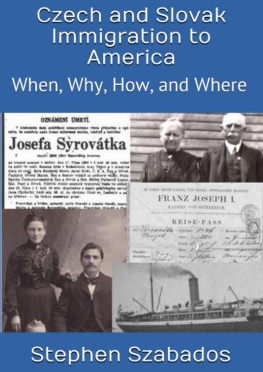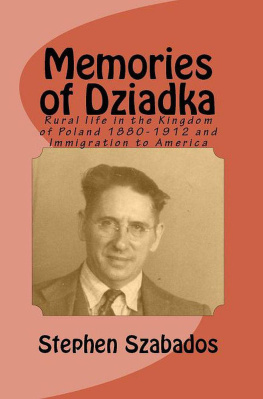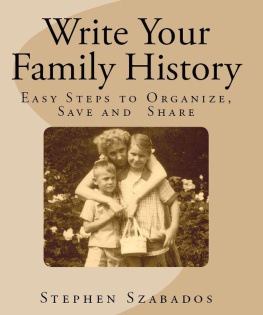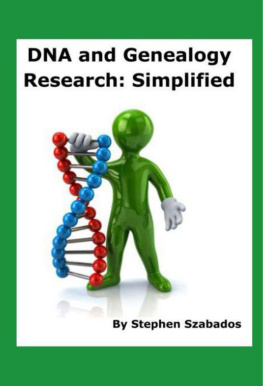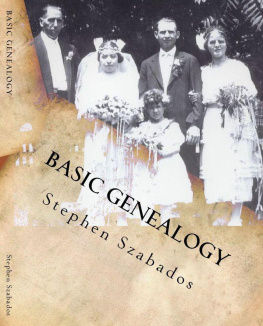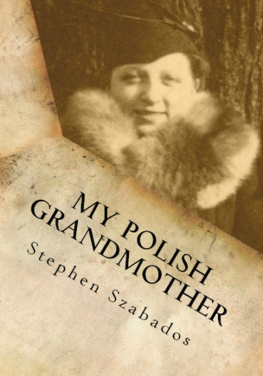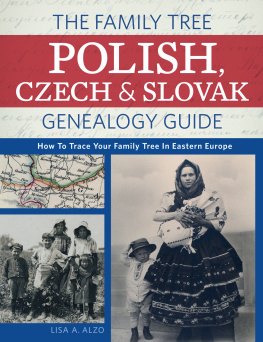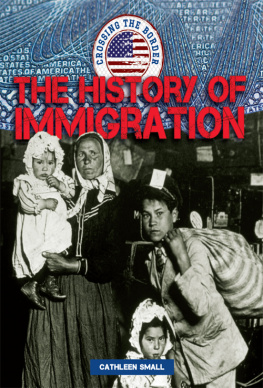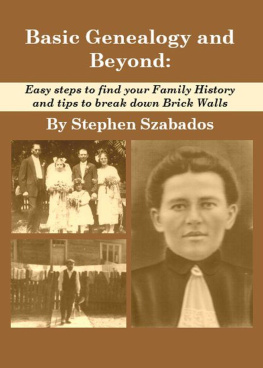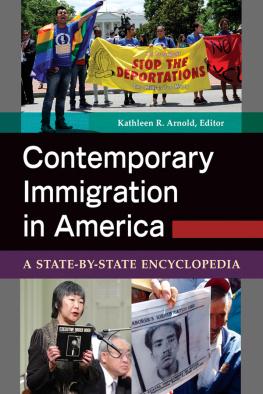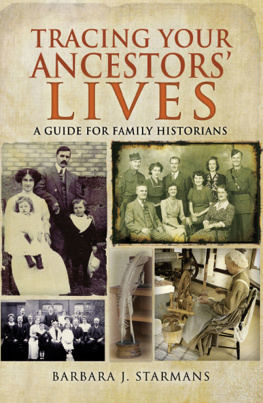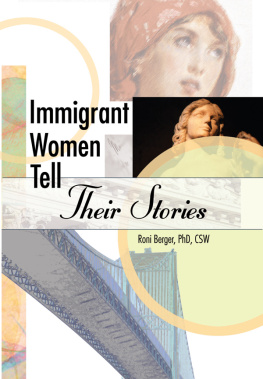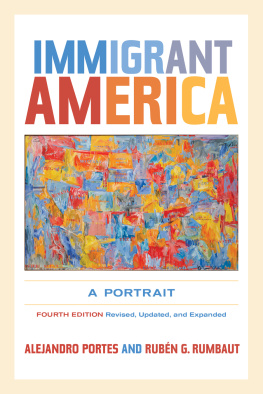Czech and Slovak Immigration to America: When, Where, Why and How
Stephen Szabados
Published by Stephen Szabados, 2020.
While every precaution has been taken in the preparation of this book, the publisher assumes no responsibility for errors or omissions, or for damages resulting from the use of the information contained herein.
CZECH AND SLOVAK IMMIGRATION TO AMERICA: WHEN, WHERE, WHY AND HOW
First edition. August 3, 2020.
Copyright 2020 Stephen Szabados.
Written by Stephen Szabados.
10 9 8 7 6 5 4 3 2 1
W hen did your Czech and Slovak ancestors immigrate, where did they leave, why did they leave, how did they get here? This book discusses the history of Czech and Slovak immigration and gives some insights into possible answers to these questions about your ancestors' immigration.
Remember that each immigrant has a unique story, and it is our challenge to dig out as many details as we can with our research. Your research should review the reasons for immigration stated in this book and then merge the reasons that match with your ancestors with the stories passed down in your family oral history. Hopefully, this book will help point the way so you will be able to add more facts to your family history.
Our immigrant ancestors are the foundation of our roots in the United States. Our lives would be much different if they did not endure the challenges of emigration from their homeland. Do not underestimate their contributions. Their roles in the factories and farms were an important part of U.S. history. They may have left us some material wealth, but their most important contribution was their descendants and their work. Their lives were building blocks in the growth of their new country.
The following chapters of this book discuss the history of Czech and Slovak immigration and factors that may give you some insights into the circumstances surrounding your ancestors' immigration. The material covers aspects of Czech and Slovak life that may have affected the immigration of your ancestors. The book also includes brief histories of most of the ports used by the immigrants for departure from Europe and the ports where they arrived. Each port has a unique history, and hopefully, you may be able to see why your ancestors arrived at the port that they did. Also covered are details of experiencing life in the steerage section of the ship during the voyage and the process of examination of the immigrants to gain admittance to the United States. The voyage and arrival process was a tremendous challenge to our ancestors and understanding what our ancestors overcame and should give more insight and respect for their lives.
Enjoy the book, and make your family come alive!
CHAPTER ONE: Emigration When and Why They Left
C zechs in Early America
A Czech was part of the pre-1600 expedition that attempted to establish a settlement at Roanoke Island in North Carolina before the English settled at Jamestown in 1607.
The first documented Czech in America was Joachim Gans, who was a mining expert. He was born in Prague and was living in England when he was recruited in 1584 by Sir Walter Raleigh. Gans was to be part of an expedition of explorers to establish a permanent settlement in the New World. The team eventually built the Roanoke Colony on Roanoke Island off the coast of North Carolina in August 1585. However, by 1586, the colony was in trouble because their relief supplies were late arriving, and attacks by the Indians endangered the settlement. The members of the expedition decided to return to England with Sir Francis Drake, who had stopped at Roanoke with his ships on his way back to England from the Caribbean. Excavations of the ruins of Roanoke Colony have unearthed lumps of smelted copper and a goldsmiths crucible attributed to Gans's work at the colony. In 1587, another group of 115 colonists landed at Roanoke, and this was the famous group that disappeared by the time their resupply ships arrived in August 1590. This second group became known as the Lost Colony of Roanoke.
The next Czech to the New World was Augustine Herman (1621-1686). He was a surveyor and skilled draftsman. He arrived in New Amsterdam in 1640 as an employee of the West India Company and held various positions where he became very influential in the Dutch Province. He eventually was appointed to the Council of Nine to advise the New Amsterdam Governor, Peter Stuyvesant. Augustine became a prosperous planter, land developer, enterprising merchant, politician, diplomat, and fluent in several languages. He later moved to Maryland and was commissioned by Cecil Calvert, 2nd Baron Baltimore, to draw a map of Maryland and Virginia. As a reward for the great work he did on the map, he received the hereditary title of Lord and a large estate, which he named "Bohemia Manor." The land associated with his estate is now St Augustine, Maryland.
Frederick Philipse (16261720) was another Bohemian who settled in early America. Philipse was born in the Netherlands but was from an aristocratic Protestant family who fled Bohemia after the Thirty Years' War to save their lives. He arrived in New Amsterdam about 1653 and married a wealthy widow. He was a merchant, tavern owner, and later landowner who became the wealthiest person in the Dutch Province.
The first large groups of Czech immigrants began arriving in 1735 with the coming of a group of Moravian Brethren in Savannah, Georgia. Shortly after that, more groups of Brethren landed in Pennsylvania. This religious sect had been forced into hiding by their Catholic Habsburg rulers. It had resettled in the Lusatia area of Saxony under the patronage of the protestant Count Nikolaus Zinzendorf. However, they decide to leave Saxony because of the worsening political and religious situation there, and the successor to Count Nikolaus was not as sympathetic.
The Moravian Brethren settled in Pennsylvania and North Carolina, and todays cities of Bethlehem and Lititz in Pennsylvania and Salem in North Carolina grew out of early Moravian settlements. The trumpets and horns used by the Moravians were the first evidence of Moravian instrumental music in America and was a significant contribution to the new and diverse culture of America. By 1776, more than two thousand Moravian Brethren were living in the colonies. After the American Revolution, the Moravian Brethren spread from their early settlements to other states, especially Ohio.
The mass immigration of Czechs slowly began in the 1840s due to political and economic problems. The failure of the revolutions of 1848 in Europe added more impetus to leave their homeland. Those who participated or supported the revolutions were known as the "Forty-Eighters" and fled to the United States, Australia, and other countries to escape the political persecution by the Austrian Habsburgs.

